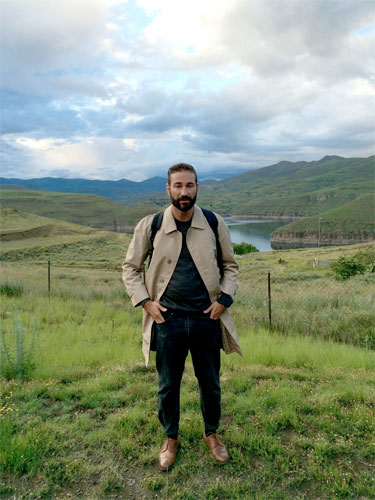Joël Tettamanti was born in 1977 in Efok, Cameroon, and grew up in Lesotho and Switzerland. He studied photography at ECAL, Lausanne, where his teachers were Pierre Fantys and Nicolas Faure. Following his studies, he worked as an assistant to the photographer Guido Mocafico in Paris. Tettamanti is established as a commercial and media photographer for clients such as Wallpaper*, Kvadrat, and international architects. His work has been featured in solo and group exhibitions in Europe, and has been the subject of several monographs, including Local Studies (2007) and Davos (2009). He lives in Lausanne.
The Swiss photographer Tettamanti creates works that focus on the impact of human settlement on the landscape, from Asia to the Arctic Circle. The images are often without people, examining instead the contradiction of human frailty and resilience, and the relationships people form with the land. His work is a vast archive of the structures, villages, and cities people create, and of the landforms and climates that shape them.
Like many photographers who have been drawn to archive the world, Tettamanti’s interest lies beyond collecting artifacts of the human imprint on the land. The questions he asks of a place – why things look the way they do, and how they came about – lead to profoundly social narratives about the people who are uplifted and sometimes defeated by the land they inhabit.
Tettamanti gravitates toward inhospitable environments where these relationships play out in spectacle: the juxtaposition of sublime natural beauty and buildings of startling banality, or ingenuity, or of land seemingly without limit and the meager architecture put upon it. The story can be one of use and misuse, where urban sprawl or industrial incursions have degraded the land and corrupted its beauty, as well as one of human adaptability and resourcefulness. The land is shaped by people as much as it shapes them.
His quest as an artist recalls the expeditionary photography of the American West in the nineteenth century, when territories previously unexplored by Americans were opened to visual imagination by the camera. Today, when technology and globalization make distant cultures accessible, there is still a sense of revelation in Tettamanti’s work. For this artist, much like the nineteenth-century pioneers of the medium, photography remains a means of understanding the world, and retains the power to astonish with images of places that exist beyond the imagination.
Source: MIT Museum
